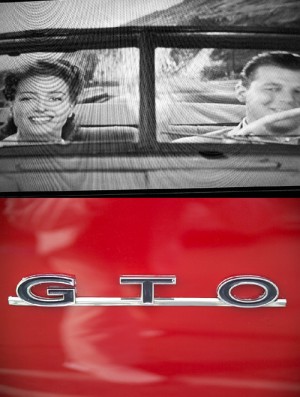MISTAKEN IDENTITY @ SUBTE MUSEUM, Montevideo, Uruguay

MISTAKEN IDENTITY IDENTIDAD QUIVOCADO
CHRISTOPHER MAKOS AND PAUL SOLBERG,
THE HILTON BROTHERS
Prologo Who am I? What is this "me"-ness that is me? What makes up my identity? Identity- I.D.- ID. Where do "I " end and "Not I" begin? How do we define "Also Known As", "Alias", "Identity Theft", "Mistaken Identity"? How do we understand these definitions: "Identify": to recognize, relate to; "Render": present or give to, draw, describe, cut or boil away fat, remove anonymously for questioning.
These are eternal and sometimes controversial words and questions we use to define selfhood and what it means to be human. Perhaps these words and questions have more urgency today, in a world shrunken by global high-speed travel and information flow. Language, culture and race seem more important even as they become less distinct.
It is this cultural fluidity that upsets and eventually radicalizes the most religiously conservative parts of society. The unease felt in this cultural vacuum is turned into fervor which often expresses itself, (with helpful guidance from "leaders") as xenophobic radicalism and hatred of the new and different. Those of more moderate temperament are left with a bewildering array of choices. Traditionally liberal societies are faced with new threats to established principles of law and order, sometimes forsaking those very principles with actions committed in the name of self-defense.
In the 21st Century more than any time before, and in more places around the world, one can find the tools readily at hand to create oneself in almost any image one chooses. The fortunate "haves" of the first world (and, increasingly, the former second and third worlds) share common points of reference drawn from electronic media that make their likes and dislikes, wants and aspirations increasingly indistinguishable. Yet the stark reality remains that great disparities of wealth, (brought into sharp focus by the proximity, both really and virtually, of haves and have-nots), continue today much as they did in ancient Rome. The ensuing unease and unrest found on the fringes of multi-nationalism have been captured and vividly realized by recent films set in contemporary Rio de Janeiro and Mumbai.
Christopher Makos and Paul Solberg are photographers who share an interest in travel to places where 21st Century people mix ancient culture with the remains of 20th Century revolutionary and totalitarian movements. Their collaborative work as The Hilton Brothers can be seen as documentation of and comment on this ad-hoc approach that is emerging as one response to contemporary life.
Photography is an act of isolation by its very mechanics. Artist and subject are separated by focal distance and the camera itself. The congress between artist and subject is one controlled by remote control in the shooting and even more so in the subsequent processing of the image. Yet in this digital age, under constant surveillance from the camera on the corner lamppost to the loftiest satellites to the imaging capabilities of our personal communication devices, our ease with photographing and being photographed has increased dramatically. With digital cameras that create files rather than film, the photographer can immediately begin the process of manipulation of his subject matter the moment the shutter closes and the image reappears as pixels on a monitor. The juxtaposition of images, the manipulation through developing prints in the dark room that once were cumbersome and time-consuming can now be accomplished quickly, with myriad variations made possible by the storage and retrieval systems of the contemporary personal computer and the programs that manipulate all visual aspects of the image itself.
As "The Hilton Brothers", Makos and Solberg create collaborative work that comments on this technology by their facile use of it, just as in public they enjoy wearing matching outfits, finishing each other's sentences, and singing in unison. The Hilton Brothers use contemporary technology to absorb their individual viewpoints and esthetics. They respond together to the diverse images they draw from their material and collaborate to make works of conversation and dialogue between those diverse images and sensibilities. In the process a new, shared vision takes shape.
This exhibition is an exploration of Makos and Solberg, at first seen individually, and then progressively as their identities mesh in a unique conversation about the technical possibilities of contemporary photography, and the
idea of identity as subject matter. The works exhibited here are intended to provide an overview that hopefully serves the viewer as a window on The Hilton Brother's slightly jarring, ever elegant visual response to the great, instant, challenging and complex world of the 21st Century.
Exhibition in a Box, Curated by Virginia Robinson, from the series "Andydandy", the box opens for the first time in South America, Continuing it journey from New York, Then to Beijing and now at the SUBTE Museum in Montevideo, Uruguay, Let's cut the ribbon.
http://www.thebohemiangallery.com/Shows-Detail.cfm?ShowsID=48